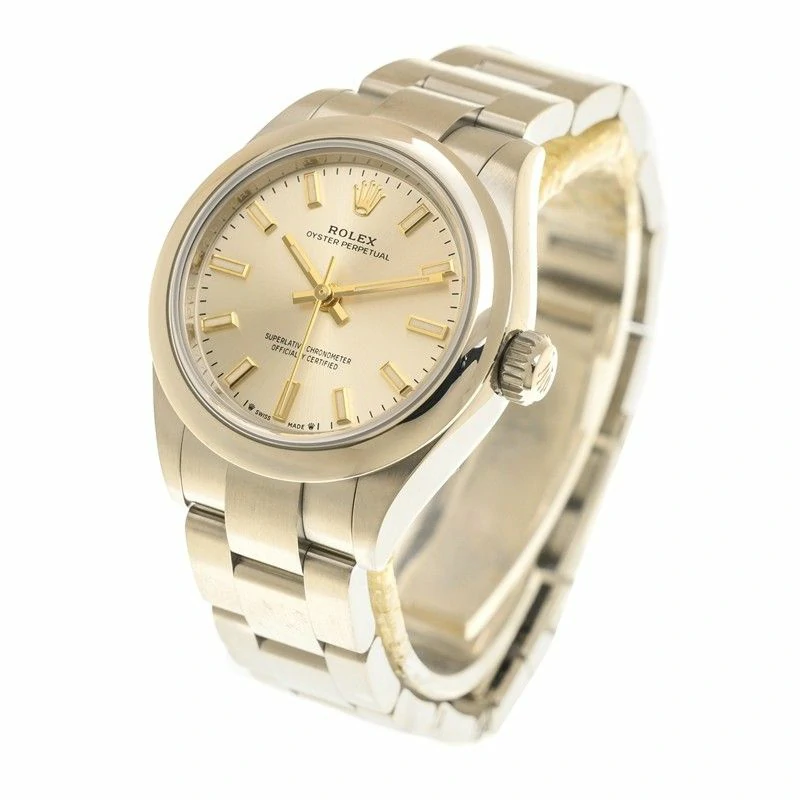Rolex watches typically feature movements from two main categories: Swiss and Japanese. Each offers distinct characteristics that cater to different preferences and priorities. Here are the differences between Swiss and Japanese movements in replica Rolex watches, helping you make an informed decision.
Body: Comparing Swiss and Japanese Quality
Materials and Construction
Both Swiss and Japanese replica Rolex watches often use high-quality materials for the casing, bracelet, and exterior features. Common materials include stainless steel, sapphire crystal, and sometimes gold plating, depending on the model being replicated.
- Stainless Steel: Both Swiss and Japanese replicas commonly use 316L or 904L stainless steel, which provides durability and resistance to corrosion.
- Sapphire Crystal: High-quality replicas from both categories typically use sapphire crystal for the watch glass, known for its scratch resistance and clarity.
Precision in Manufacturing
Where Swiss and Japanese replicas diverge significantly is in the precision of their manufacturing, especially regarding exterior details:
- Swiss Quality: Swiss replicas are often praised for their meticulous craftsmanship and attention to detail. They strive to mirror the authentic Rolex as closely as possible, with exterior details that are almost indistinguishable from the original. This includes accurate engravings, precise alignment of components, and a high-quality finish.
- Japanese Quality: While Japanese replicas also use quality materials and are well-constructed, they might not achieve the same level of precision in exterior details as their Swiss counterparts. Some minor differences in finish and detail may be noticeable upon close inspection.
Example:
For instance, the intricate designs on the dial, the exactness of the bezel markers, and the alignment of the date window might be closer to the original in Swiss replicas compared to Japanese ones.
Mechanism: Swiss ETA vs. Japanese Miyota
Swiss Quality Movements
- Swiss ETA Movement: Swiss replica Rolex watches typically feature ETA movements, renowned for their reliability and precision. These movements are crafted in Switzerland and are considered identical to those used in authentic luxury watches. Swiss ETA movements are known for their smooth sweeping second hands and long-term durability.
- Precision and Craftsmanship: Swiss movements are engineered with a high degree of precision, often resulting in timepieces that are highly accurate and dependable.
- Durability: These movements are designed to last, with robust construction and high-quality materials that ensure longevity.
Japanese Quality Movements
- Japanese Miyota Movement: Japanese replicas often use Miyota movements, a popular choice in the watchmaking industry, especially known for their reliability and affordability. While they are generally dependable, they might not match the precision and finesse of Swiss ETA movements.
- Accuracy: Miyota movements are reliable but can sometimes be slightly less precise than their Swiss counterparts, particularly in terms of the smoothness of the second hand’s sweep.
- Affordability: Watches with Miyota movements are typically more affordable, making them an attractive option for those looking for a cost-effective replica.
Chronograph Functionality
- Swiss Models: In high-quality Swiss replicas, chronograph features usually function accurately, replicating the original Rolex’s functionality.
- Japanese Models: On many Japanese replicas, chronograph subdials may be non-functional and included merely for aesthetic purposes.
Features: Functionality and Aesthetics
Swiss Replicas
- Functional Features: Swiss replicas often go beyond just appearance; they aim to replicate the original’s functionality as closely as possible. This includes working chronographs, accurate GMT functions, and precise calendar mechanisms.
- Attention to Detail: Features such as the smooth sweep of the second hand, the exactness of the Rolex crown logo, and the operation of additional complications are meticulously crafted to match the original.
Japanese Replicas
- Functional Limitations: Japanese replicas may include certain features more for show than function. For example, chronograph subdials might not be operational and are included to mimic the look of the original watch.
- Practical Aesthetics: Despite these limitations, Japanese replicas still offer a visually appealing alternative that captures the essence of Rolex designs, suitable for those prioritizing appearance over functionality.
Making Your Choice: Swiss or Japanese?

When deciding between Swiss and Japanese quality replica Rolex watches, consider the following factors:
Budget
- Swiss Quality: Typically more expensive due to their high precision, detailed craftsmanship, and functional features.
- Japanese Quality: More affordable, making them an attractive option for those seeking the Rolex look without the higher price tag.
Desired Functionality
- Swiss Quality: Ideal for those who desire a watch that not only looks like a Rolex but also performs closely to the original.
- Japanese Quality: Suitable for those who prioritize appearance over functionality and are content with basic timekeeping features.
Longevity and Reliability
- Swiss Quality: Offers greater durability and long-term reliability, often justifying the higher price for those who plan to wear the watch regularly and rely on its performance.
- Japanese Quality: Provides good reliability for everyday use but may not match the longevity of Swiss movements, making them a suitable choice for occasional wear.
